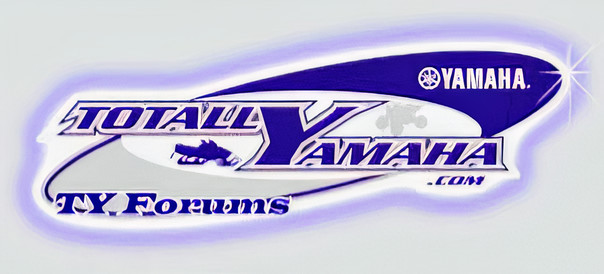Bronc_twister
New member
Bought this sled late last year and we've been doing some tuning and such. Wanting some direction on air screw adjustment (I'm guessing turning them out leans the mix and turning them in fastens it up). Running 150 main jets and 47.5 pilots right now. What's a good baseline on the air screws? Typically been riding in elevations varying from 7500 to 11000 ft above sea level. The plugs look pretty good.
Last edited:
Backwoods M Max
New member
On the tm-33 carbs it's a fuel screw not an air screw like on round slide vm series carbs. The tm carbs has a third idle circuit jet that screws into the intake side of the carb throat. Where that open hole that leads to the air screw on a vm is has a fixed pilot jet. When you have idle issues that pilot is generally plugged and the hole is tiny. It only takes a little bit of belt dust to plug it.
Bronc_twister
New member
I'm not having idle issues. I just have to feather the throttle a bit when taking off from a dead stop or barely moving.

staggs65
Moderator
Because they're fuel screws out fattens mix, in leans it
Unlike the VM carbs where the pilot air screw meters air flow to the both the idle bypass outlet (under the slide) and the main idle outlet (after the slide), the TM rack mounted carbs have a fuel screw that controls the fuel to the main idle outlet only. At idle the air flows from the carb throat under the slide and down through the idle bypass outlet. Then along with air entering through the idle air jet (in the carb throat) it allows fuel to be picked up and carried out the main idle outlet. Thus the pilot fuel screw controls this mixture. However coming off idle, the flow through the bypass outlet (under the slide) reverses direction and fuel comes out both the idle bypass and the main idle outlets. The mixture screw only meters the main idle outlet whereas the bypass outlet is controlled solely by the pilot jet size. Thus with thin air it is even more important to size the pilot jet right. Many Mtn Vipers have pilot fuel screws at 3 turns out or more at higher elevations. Then they have 55 pilot jets to combat the poor pressure created at higher elevations due to the thin air and slow air flow through the carb. After the reversal of flow in the bypass as the throttle opens more, the jet needles take over and the height of these needles are critical for a smooth transition. Then once the jet needles raise further and the size of the mains really kick in, the air flow is significant enough to create good pressure and the mains then need to be smaller to create the right mixture for the less dense air.
Thus strange as it sounds, you need larger pilot jetting and smaller main jetting to combat the thin air at higher elevations.
The mains seem big for that elevation and the pilots seem small. The Yamaha charts call for a stock engine to have the following . . .
[table="width: 1000, class: grid, align: left"]
[tr]
[td]Elevation / temp[/td]
[td]-20F - 0F[/td]
[td]0F - 20F[/td]
[/tr]
[tr]
[td]6700-8300 ft[/td]
[td]MJ 147.5, PJ 52.5, JN 2.5, PS 2-7/8[/td]
[td]MJ 146.3, PJ 52.5, JN 2.5, PS 2-7/8[/td]
[/tr]
[tr]
[td]8300-10000 ft[/td]
[td]MJ 145, PJ 55, JN 2.0, PS 3-1/8[/td]
[td]MJ 143.8, PJ 55, JN 2.0, PS 3-1/8[/td]
[/tr]
[/table]
I would consider dropping your mains but only after putting 55 pilots in and backing your pilot screws out to 3 turns at least.
Be sure to check your jet needle clip settings.
Thus strange as it sounds, you need larger pilot jetting and smaller main jetting to combat the thin air at higher elevations.
The mains seem big for that elevation and the pilots seem small. The Yamaha charts call for a stock engine to have the following . . .
[table="width: 1000, class: grid, align: left"]
[tr]
[td]Elevation / temp[/td]
[td]-20F - 0F[/td]
[td]0F - 20F[/td]
[/tr]
[tr]
[td]6700-8300 ft[/td]
[td]MJ 147.5, PJ 52.5, JN 2.5, PS 2-7/8[/td]
[td]MJ 146.3, PJ 52.5, JN 2.5, PS 2-7/8[/td]
[/tr]
[tr]
[td]8300-10000 ft[/td]
[td]MJ 145, PJ 55, JN 2.0, PS 3-1/8[/td]
[td]MJ 143.8, PJ 55, JN 2.0, PS 3-1/8[/td]
[/tr]
[/table]
I would consider dropping your mains but only after putting 55 pilots in and backing your pilot screws out to 3 turns at least.
Be sure to check your jet needle clip settings.
Bronc_twister
New member
Ok thanks gents!

